Much like the urban sombrero, people have been trying to make city or mainstream versions of typically niche things. While they often fail spectacularly, some of these items break through and prove worthwhile.
Designer Konstantin Shaporenko decided to take the versatile kukri — a machete-like tool usually found in the jungles of Nepal — and make it into a pocket knife. He launched the product on Kickstarter for some help getting things off the ground.
Shaporenko isn’t the first person to make a pocket-sized kukri folder. Cold Steel makes a very solid kukri folder in the Rajah series, and Magnum by Boker has the inexpensive Pocket Kukri as well. What makes the Urban Kukri a little different is its focus on being not only legal in most locales around the world but also being a piece of art.
They sent me one to look at. You’ll find my honest opinion below.
Background of the Urban Kukri
The Urban Kukri campaign launched on Kickstarter around November 7 with the modest goal of $12,00 for funding. As of publication, the campaign was fully funded by more than 290 backers who pledged over $21,000.
This means the project will move forward no matter what. There are still about two weeks to go before the project closes though.
Here’s a video released by the team:
I couldn’t find much else about Shaporenko, so I asked for some background on the artist/designer. He’s from Ukraine and likes working with metal. Here’s more of his backstory they sent me:
My ancestors were soldiers, Zaporozhye Cossacks. I have always been fond of knives since childhood, but I came to their creation not so long ago. The occasion was not the best, in my country the war began and all the people who wanted peace began to help the soldiers of Ukraine.
The army needed everything, and my comrades and I began to make knives and tools for soldiers. In the process, I learned the important elements of working with serious materials. For three years of constant practice, I have mastered certain skills and knowledge about knives.
Becoming literate technically, I began to create no longer simple knives, but all sorts of interesting products that can hardly be called a knife. This project is suitable for all urban residents, regardless of gender. This is a pocket knife for the city and travel.
He has a pretty cool backstory that’s admirable. But what about the knife itself?
Urban Kukri Specifications
The Urban Kukri comes in three different-sized blades — 100 mm, 50 mm, and 30 mm. That translates to 3.93 inches, 1.96 inches, and 1.18 inches.
The knife is a friction folder (if you aren’t sure what a friction folder is we’ve got you covered). The blade material is D2 steel and the handle is AISI 316Ti stainless steel. There is also a version of each with a copper handle.
So all in all there are six versions of the Urban Kukri.
Initial Impressions
When I received my 100 mm version and unwrapped it from the bubble wrap, I was smitten. This thing is beautiful.
It’s a shiny piece of metal that’s good-looking and well-made.
Although you might look at it and think it’s just a piece of cold steel, the fact that it’s made by hand makes it feel surprisingly warm.
There are very few markings on the blade or the handle, which is something all companies should consider. There is a small engraving at the top of the handle that says “Kickstarter Special Edition,” but it’s hardly noticeable. “Urban Kukri” is also written in small letters on the spine of the blade.
Upon engaging the blade using the extended tang, I found the opening to be extremely difficult. This can be problematic as I will talk about later.
Out of the box, the knife was very sharp and easily passed the old paper test.
Urban Kukri Made by Manual Craft
One thing I haven’t gotten into yet is the fact that this knife is made using only hand tools and elementary mechanical devices. They call this the simplest folding knife currently available.
Here’s more about that:
Also, I chose the simplest mechanism, without additional, in my opinion, superfluous limiters, levers, etc. If you want yourself a knife with bells and whistles – a wheel drive(multi-tool), here is another idea. My knife for real aesthetes and connoisseurs. Simple and reliable.
…
Almost everything I do with the help of hand tools and elementary mechanical devices, like my ancestors, 200 years ago forged their legendary sabers.
The concept behind this knife is very cool and it looks like something you could put in a museum. In fact, it seems like using a knife in an installation is one of its possible purposes.
The Practicality of the Urban Kukri
I’ve been building this knife up as you can probably see because I’m about to cut it down a few pegs. For real world use, this knife is not the most practical.
The Rivet
First, let’s get to the opening. There is no pivot. While Shaporenko opted for simplicity over everything, the availability of a pivot that can be adjusted is essential in a useful folder.
Here’s what they said about the rivet:
The rivet allows the blade to be firmly locked when folded. If it loosens, you can tap the rivet gently with a hammer and everything will turn out as usual.
Hammering the rivet when it loosens is a less than elegant way to fix something.
Right now, the rivet on the one they sent is way too tight. I understand they make it hard so it doesn’t open or close by itself, but it’s extremely difficult to move, even with two hands. (Maybe they made it that way to conform with knife laws, but I’ll have more on that later.)
Not only do I think it will loosen up the more I use it (it already has) but it might also just be the knife I have. Since they’re made by hand, I’m sure you get a range. Still, the lack of adjustable pivot is a problem if you plan on using this knife in a meaningful way.
The Blade Shape
The kukri blade shape is interesting. The original kukri is a long machete found in Nepal meant to be used for everything — including cutting food and going to battle. The reason is that the blade shape offers some serious versatility. It has a piercing point, deep belly for cutting, and a smaller portion for finer tasks.
All those benefits are scaled down into the smaller size (though it gets less useful the smaller you get).
With all that being said, sharpening will be a chore. You can’t do it with stones or many types of sharpeners. You’ll probably be best served using rods like those found in the Spyderco Sharpmaker.
You may not think the kukri shape is the best for a folder, but like I said, the Cold Steel Rajah III has great reviews.
Friction Folder
I don’t have problem with friction folders because they have a time and a place. This knife was made with the intent of conforming to many different laws, especially those that ban locking blades. The UK has some pretty stringent knife laws, so this is good for people in Europe.
Another reason for the friction folder is that locking mechanisms are modern creations. This design harkens back to the old days when friction folders were the way to go.
For an EDC in the United States, a friction folder is perfectly acceptable, but don’t expect to go batoning with this folder or using it for hard tasks.
Carry
One thing that may bother people who plan on using the knife is the size and weight. The knife comes in a few different sizes, so you have some options. However, the way it was made puts a lot of weight on the knife. The 100 mm knife weighs in at 4 ounces, which can be heavy in an EDC. You can get a hard-use folder like the Rajah III with a locking mechanism and a 3.5-inch blade at 4.5 ounces.
On top of the weight, it doesn’t have any carry methods. There is a stretch goal that includes a sheath, but just having it loose in the pocket may spell trouble, since the extended tang can be very pointy.
Urban Kukri as a Work of Art
So while the Urban Kukri is made to be used in real life applications with some limitations, I would say the knife works best when used as a set piece or a piece of art.
The team is upfront about this too. When someone asked about the more technical details of the knife, the team said “in the first place it is an object of design and art.” Here’s more of how they responded:
Initially, Urban Kukri thought of me as a sculpture. He must stand on the table and tell everyone that the owner of this knife is an aesthetic and loves knives. By functionality, the knife can cut, can beat with a ponytail. But I never wanted to create weapons, and if I make a lok to this knife, it will be already a formidable weapon.
It’s not surprising to say this is a sculpture first and foremost and that’s not a problem.
The smaller 30 mm version is described as knife jewelry, and that description may even extend to the larger models. Just look at it:
Price
There are a ton of ways to get the different “rewards.” I encourage you to check out the Kickstarter page for all the details, but here’s a general breakdown.
As of right now, you can get the 30-mm version for $25, the 50mm version for $35, and the 100mm for $55. For $110, you can get all of them.
Finally, for a cool $5,000, you can get a mohawk sculpture featuring the knives.
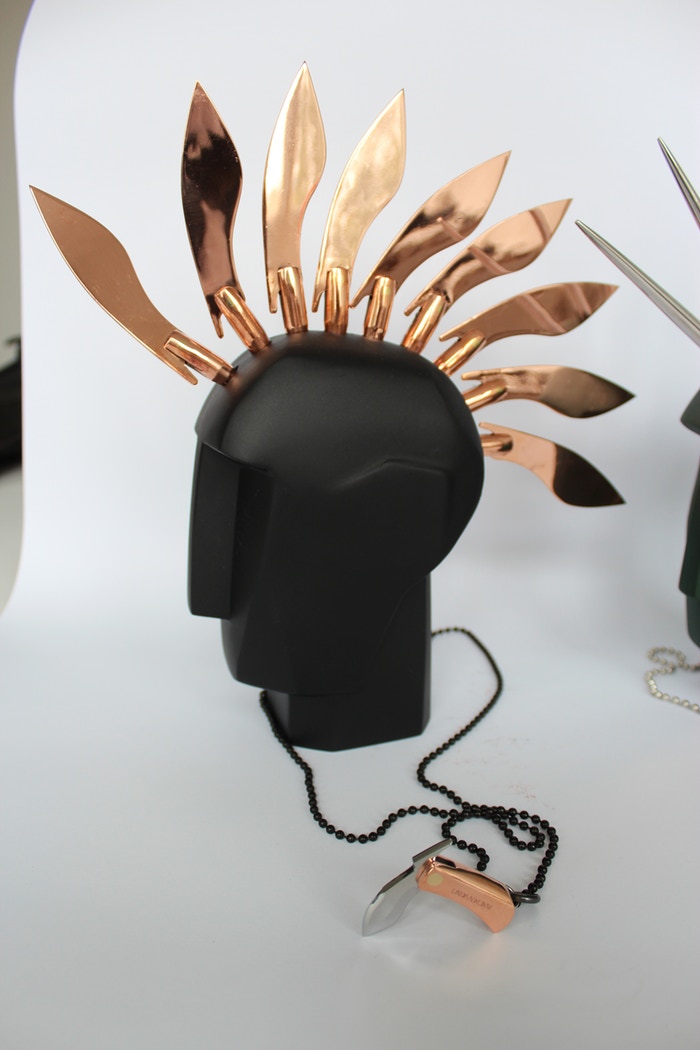
Conclusion
I love this knife. It is gorgeous and has a great backstory. I want people to ask about it when they look at my collection, so I can tell them how it’s made using hand tools and elementary mechanical devices by a team in Ukraine.
But will I ever carry it around as an everyday carry knife? Likely not. It’s too heavy, impractical for hard use, and is a pain to sharpen.
I’m happy that the project has been funded already and that Shaporenko and his team are able to create his Manual Craft company. I’m looking forward to what other creations they come up with.
If you want a tough EDC folder or even an EDC that conforms to laws in the UK, you’ll probably want to look elsewhere. But if you want a knife that’s a work of art with a great backstory, head over to the Kickstarter page.
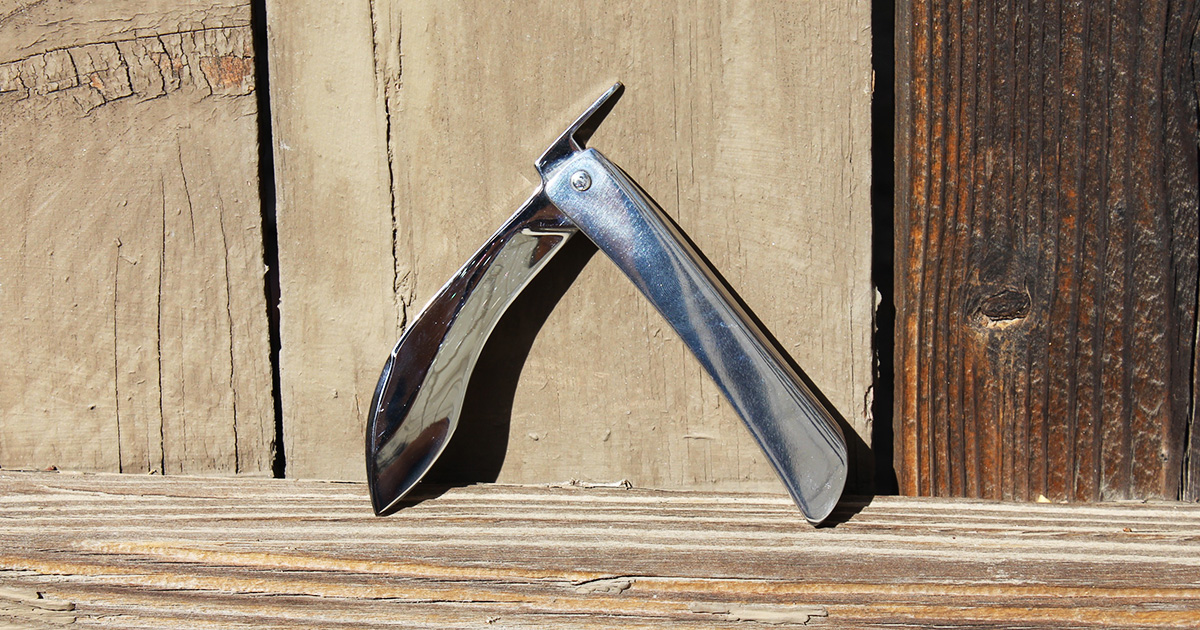
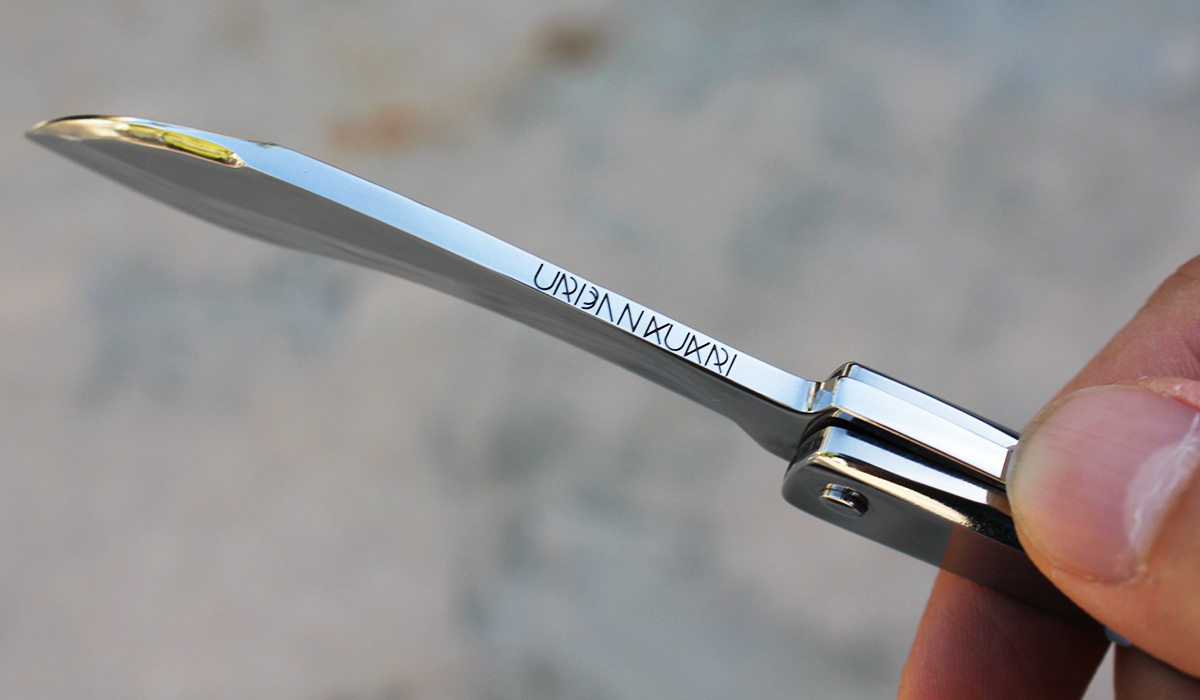

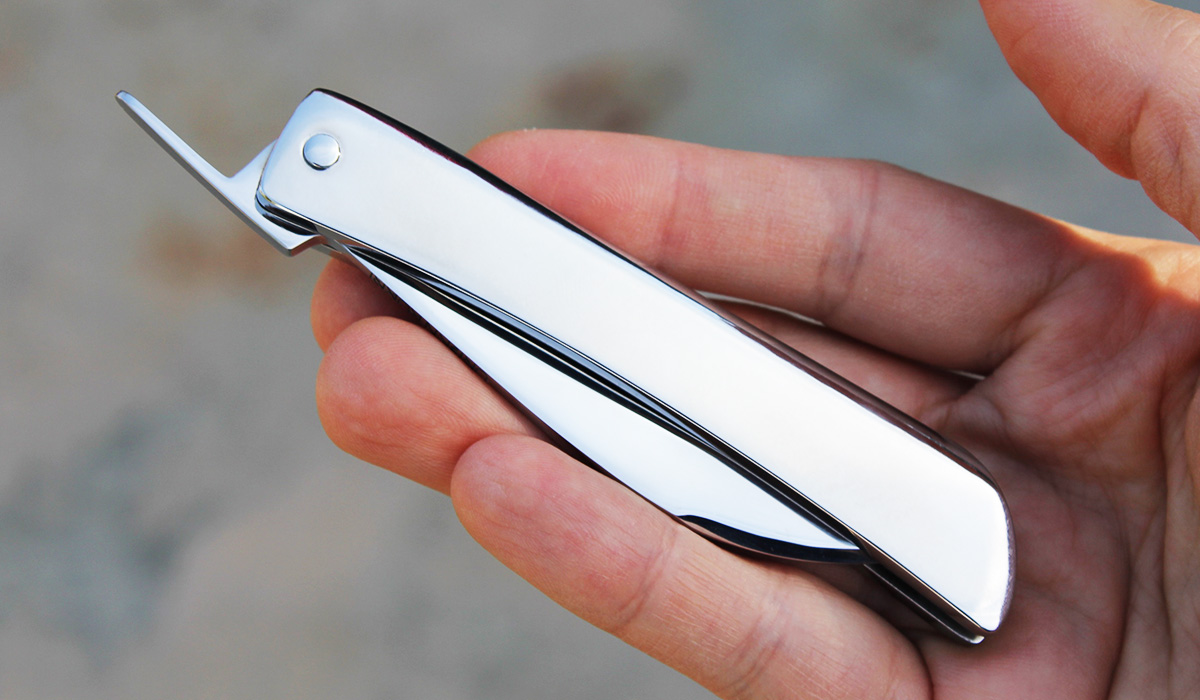
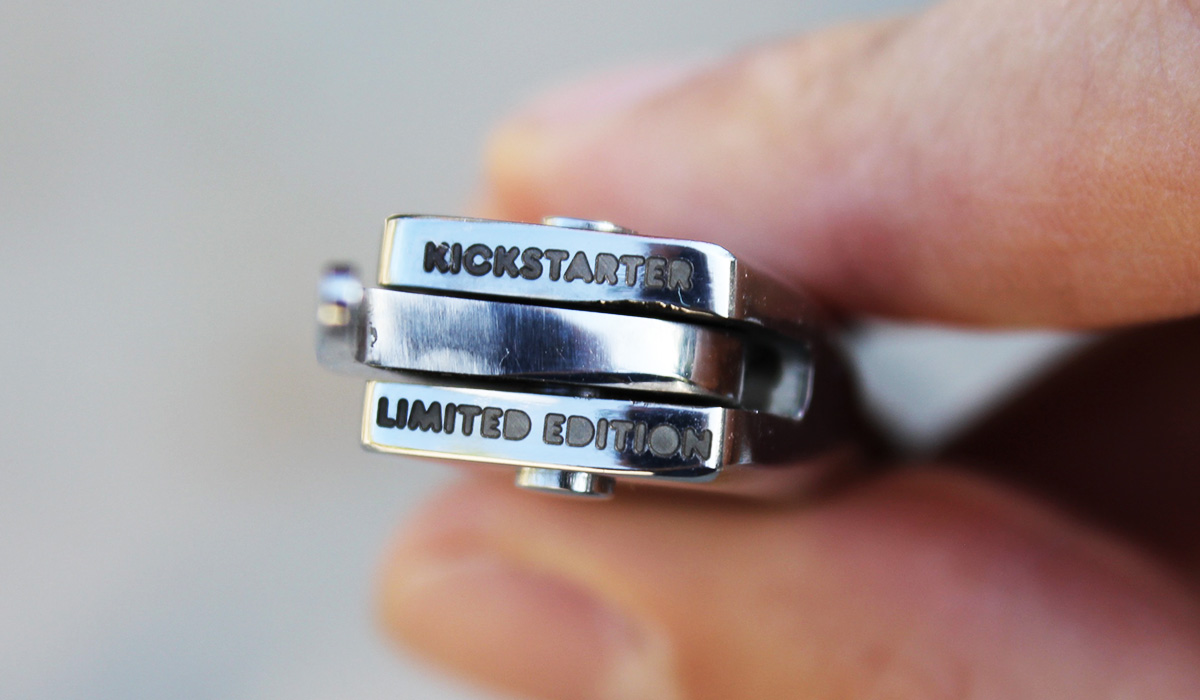
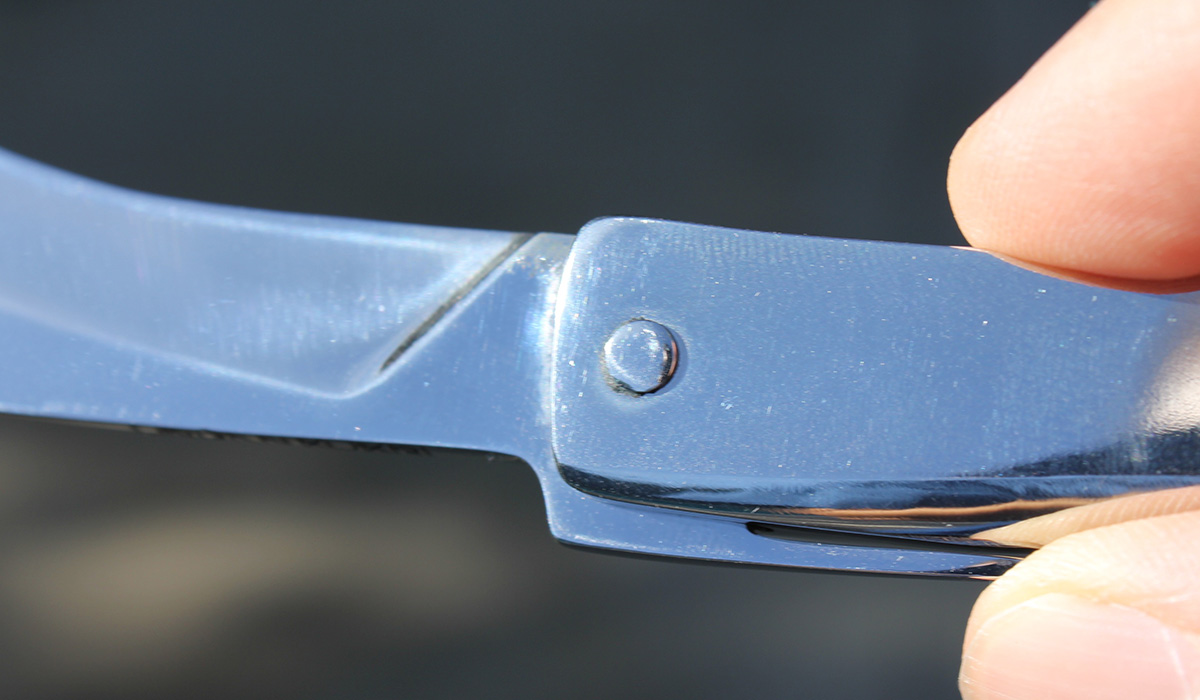
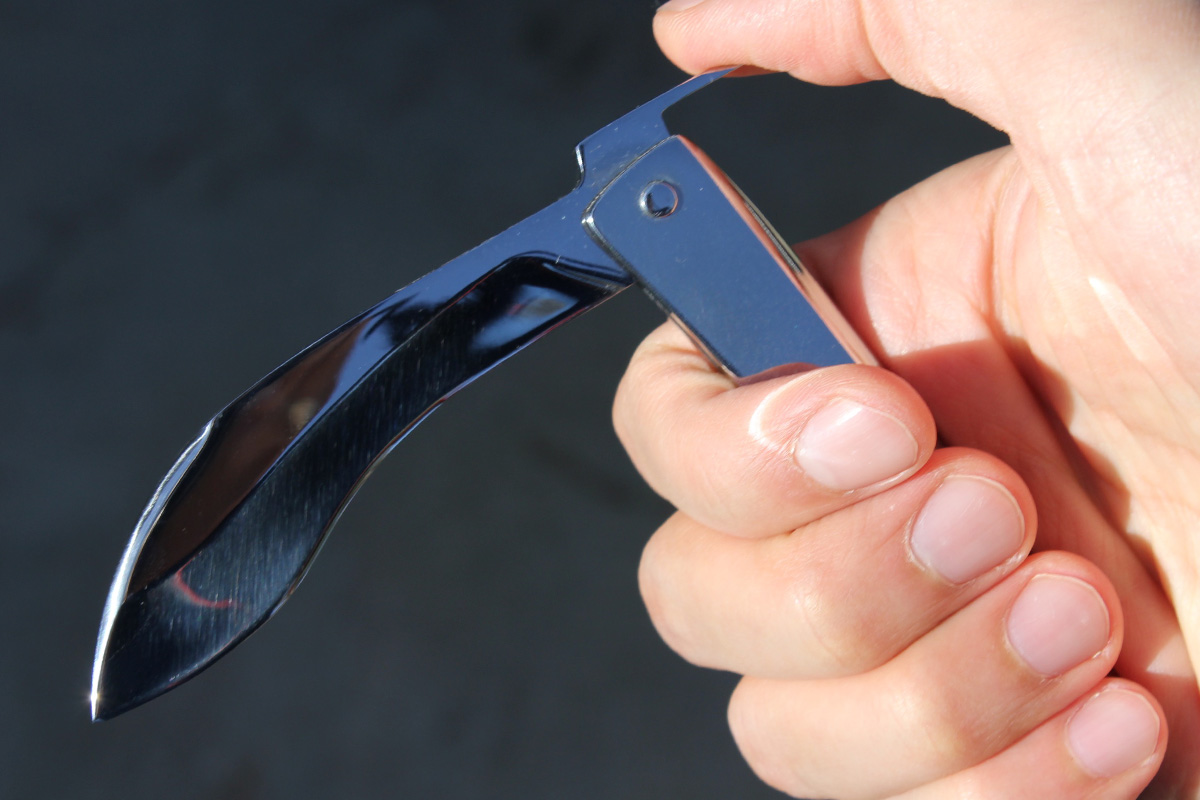
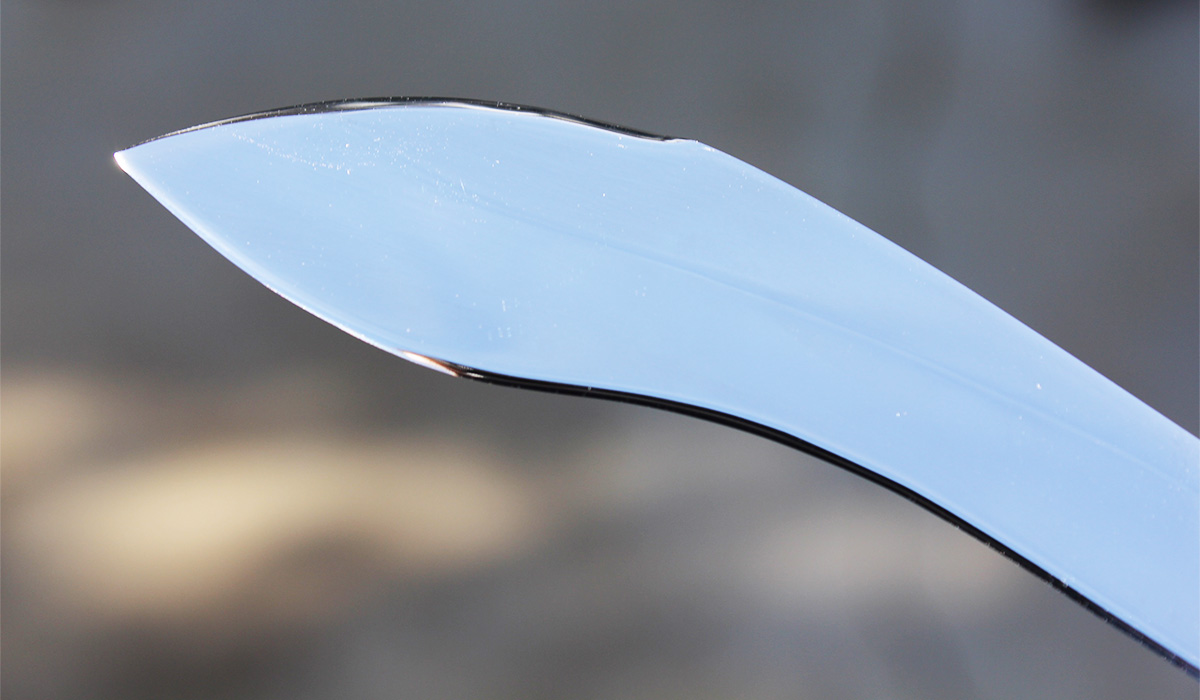
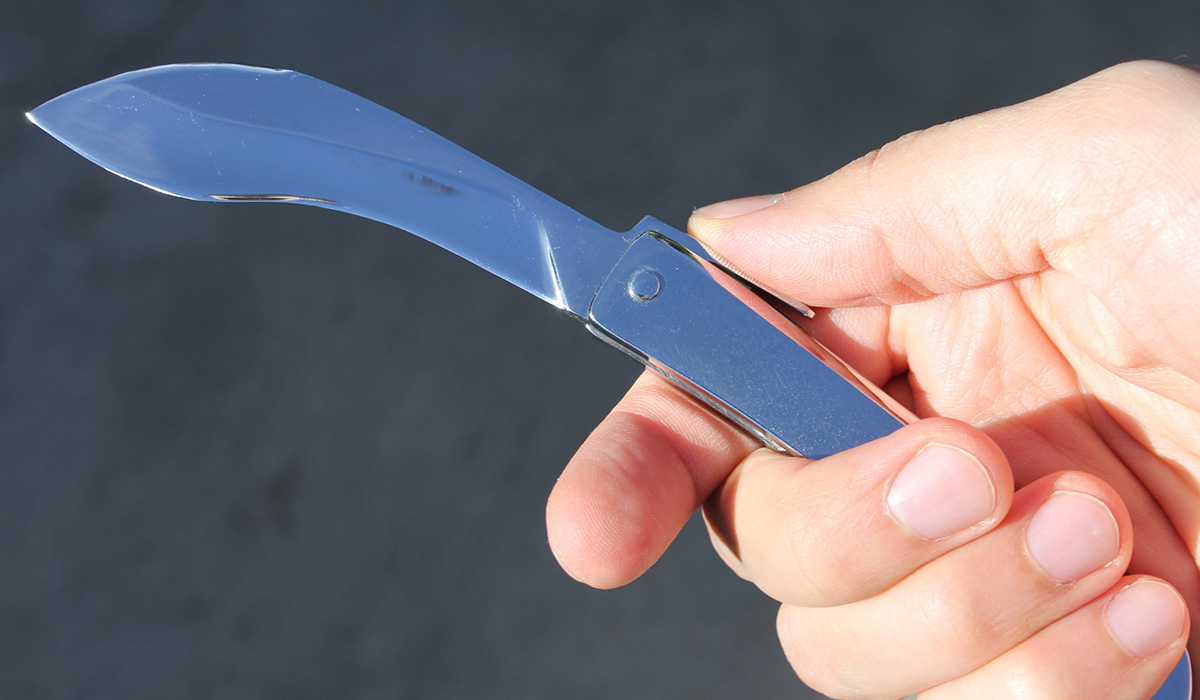
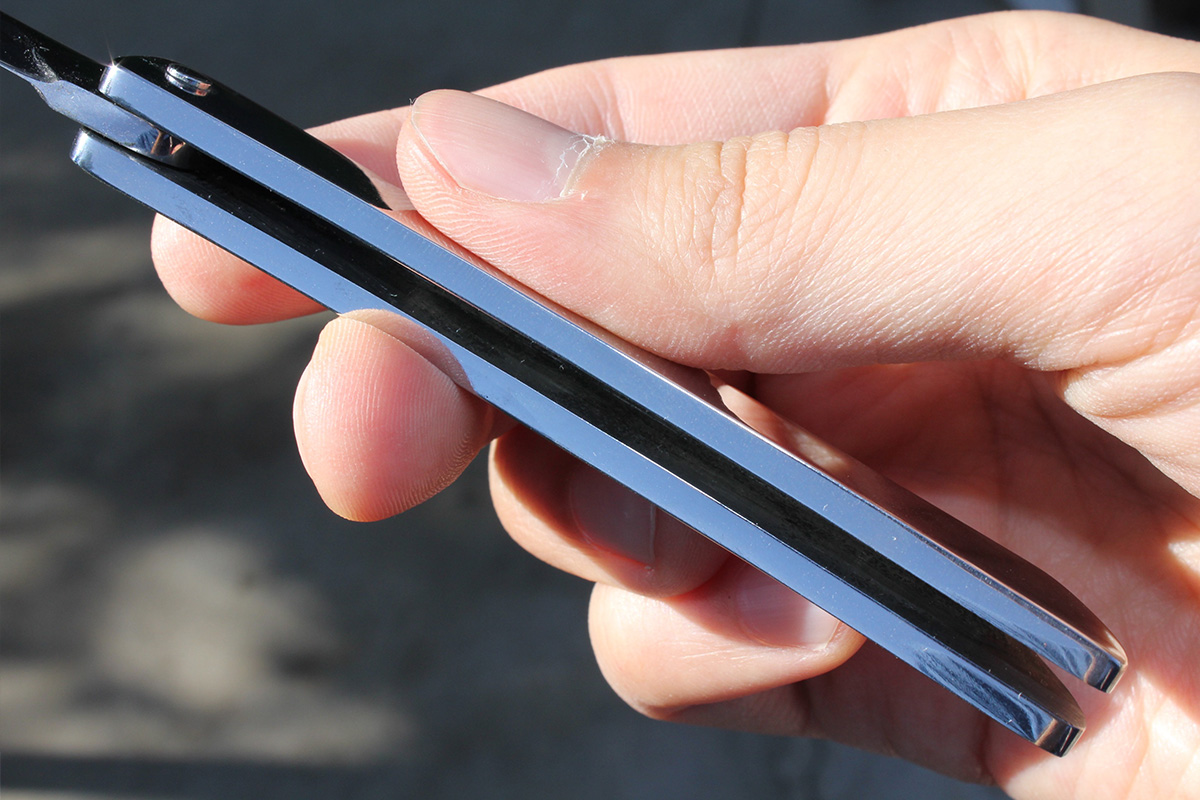






November 22, 2017 at 1:12 am
An interesting shape of the blade, the logo is combined with a general design, mirror polish, but the lack of a lock … perhaps I’ll take myself in a collection